What is a “panelized” walk-in chamber?
Panelized walk-in chambers are test chambers constructed using interlocking insulated panels, allowing for easy assembly of any size without significant construction challenges during move-in. Panels are typically sealed together with special silicone caulking. A separate temperature/humidity conditioning system (we call a MAP), is installed in one wall of the chamber. The panels are manufactured to ESPEC high-quality standards, for a wide range of testing conditions.
What benefits do panelized chambers offer?
Being able to select a chamber box size for your needs is important, including door size and location. Utilizing a standard MAP sub-assembly allows for faster and more efficient manufacturing, and installation at your site.
What temperature and humidity conditions can be simulated in ESPEC's walk-in chambers?
ESPEC's walk-in chambers can simulate temperatures ranging from -35°C or -65°C to as high as 85°C. Humidity testing range of 10% to 95% RH, with special low-humidity options available. Temperature cycling rates of up to 10°C/min. are possible. (Higher temperatures or extreme humidity like 85°C/85% can be accommodated with a solid walk-in chamber.)
This size test chamber is more likely to be testing fully-running products. Let us know things like: The mass of the product, heat generated by the product, possible ingress or occupation by people, power or other supporting inputs for the system to operate.
Are panelized walk-in chambers suitable for extremely large applications?
Absolutely! ESPEC North America has successfully built extremely large drive-in chambers using panels, showcasing their scalability. The panels are lightweight, making move-in to your installation site easy. Larger chambers may need structural members for the ceiling, which would be included with your system. Large double-doors can be included, for maximum access.
How does ESPEC determine the right walk-in-test chamber for my needs?
We base the selection of the proper conditioning MAP, chamber, and system features, based on the information provided about your application. Every panelized walk-in system is built to order. Simply provide details such as desired chamber size, site limitations, temperature extremes, test profiles, humidity control needs, test load details, and any other specific testing requirements to your sales representative. Our price quotes typically include a concept drawing so you can start planning with confidence.
Are there any limitations or restrictions on the types of materials that can be tested in ESPEC's walk-in chambers?
Our chambers typically use wire elements for heating, which can ignite flammable gasses emitted by your product. Additionally, there may be instances of chemical leaching from humidity testing. Please inform us if your product emits any chemicals or poses a risk of doing so during testing.
What considerations should be made for site planning?
When planning for site installation, it's important to account for floor space and provide additional space for the conditioning MAP adds, as well as three feet (one meter) spacing for servicing. In applications where large or frequent loading occurs, consideration should be given to installing a floor pit, so the insulated floor is at the same level as the room. Local codes, safety regulations, and considerations for the planned usage of the equipment should also be thoroughly investigated. All walk-in chambers include an interior safety release.
How does ESPEC assist with the installation and initial setup of walk-in test chambers?
ESPEC provides dedicated installation teams for large systems like walk-ins. Before installation, our team will meet with you to review the project. Typically, a basic walk-in chamber can be installed and commissioned within one week.
Can ESPEC's walk-in chambers be integrated with external testing or monitoring equipment?
Yes, our walk-in chambers can be built to integrate with third-party test systems such as lighting, power supplies, robots, vibration and motion simulation, and battery cyclers.
 ESPEC North America, Inc. (Corporate office)
ESPEC North America, Inc. (Corporate office)
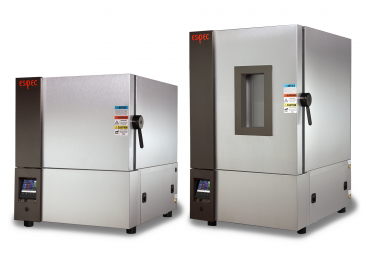

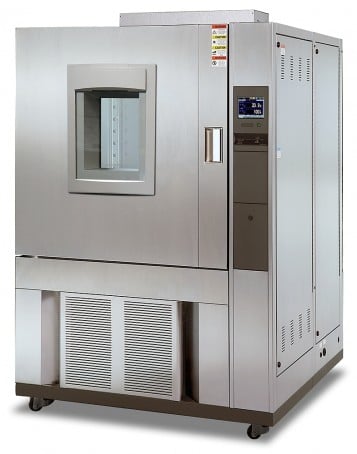
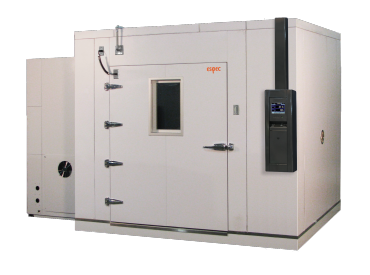

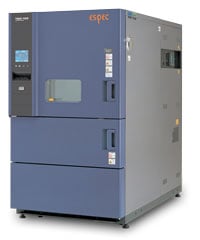
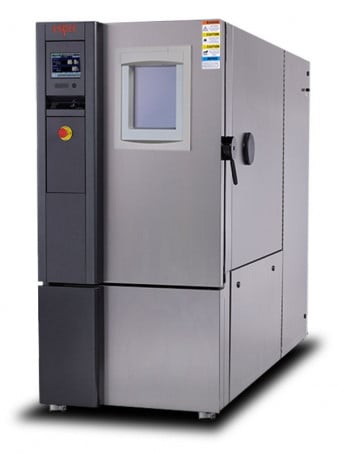
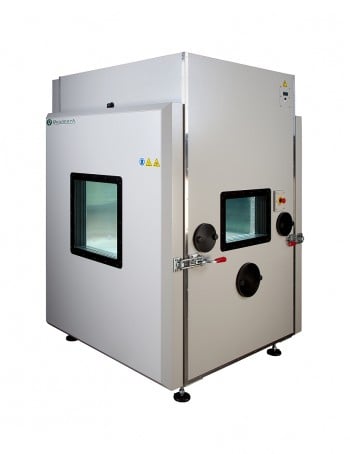
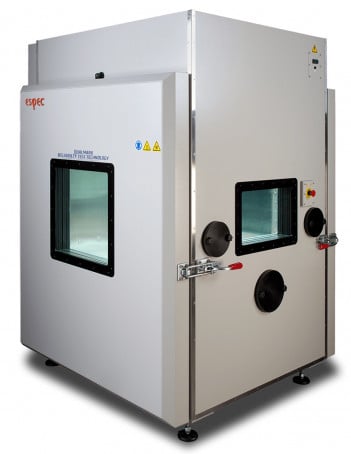
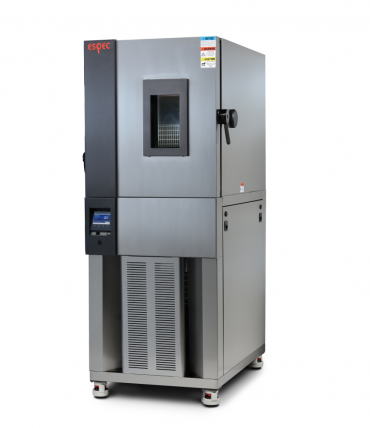
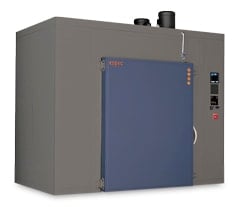
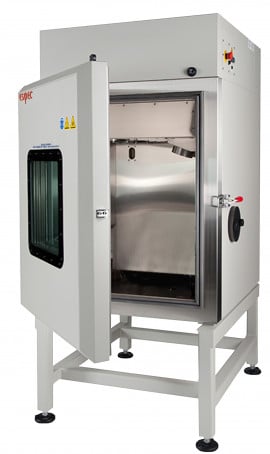
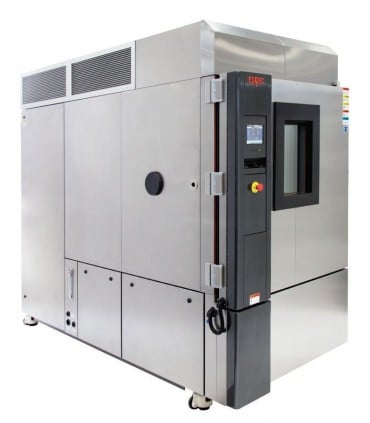
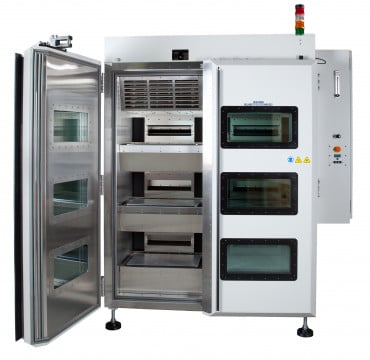

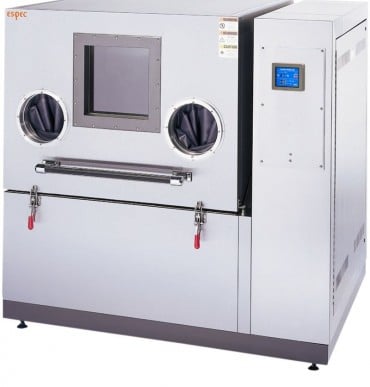
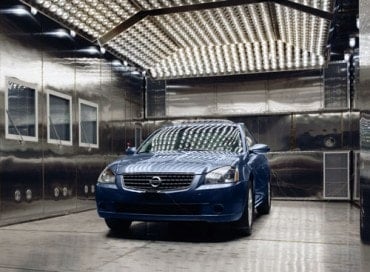
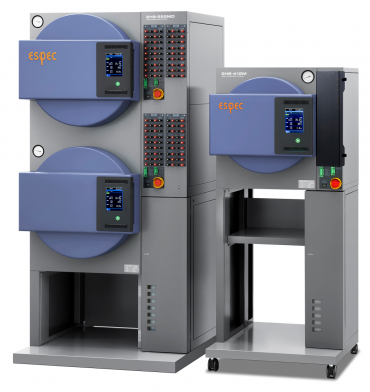


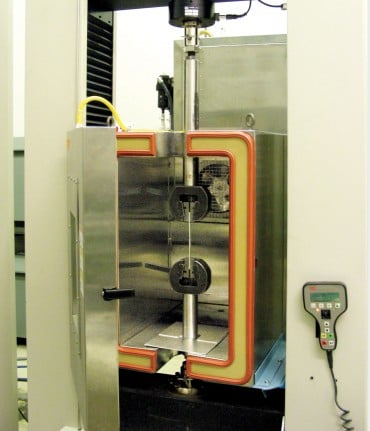
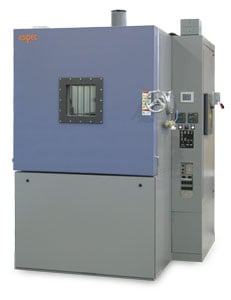

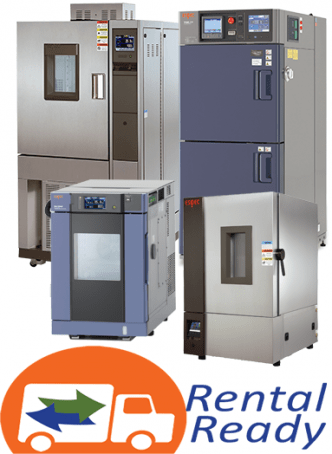
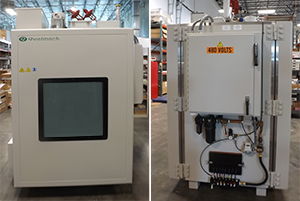

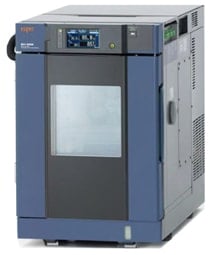

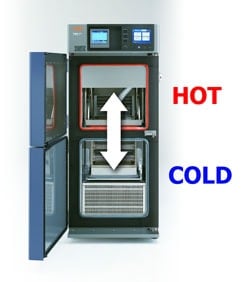 Unfortunately many people use the same name to refer to different tests. Thermal shock is one of those. Let me elaborate:
Unfortunately many people use the same name to refer to different tests. Thermal shock is one of those. Let me elaborate: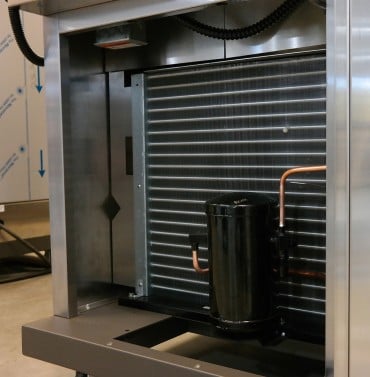
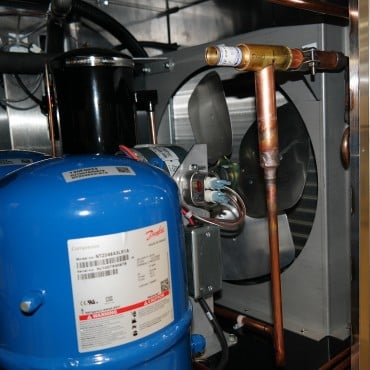 ESPEC’s
ESPEC’s 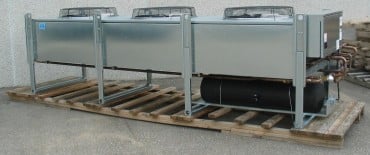 To keep the ambient air at your condenser at its lowest possible and keep the system running efficiently, plan ahead. Locate the condenser in a shady location, preferably on the north or east side of your building. If placing the condenser on the roof, a reflective surface, like white pebbles, is best. Of course, allow adequate spacing for good airflow. Only for the most demanding, high production applications, should this be a serious concern. In regions where the design standard is higher than 95°F, ESPEC will need to oversize the refrigeration condenser and/or adjust the pressure limits of the system. To learn more, check out this web page:
To keep the ambient air at your condenser at its lowest possible and keep the system running efficiently, plan ahead. Locate the condenser in a shady location, preferably on the north or east side of your building. If placing the condenser on the roof, a reflective surface, like white pebbles, is best. Of course, allow adequate spacing for good airflow. Only for the most demanding, high production applications, should this be a serious concern. In regions where the design standard is higher than 95°F, ESPEC will need to oversize the refrigeration condenser and/or adjust the pressure limits of the system. To learn more, check out this web page: